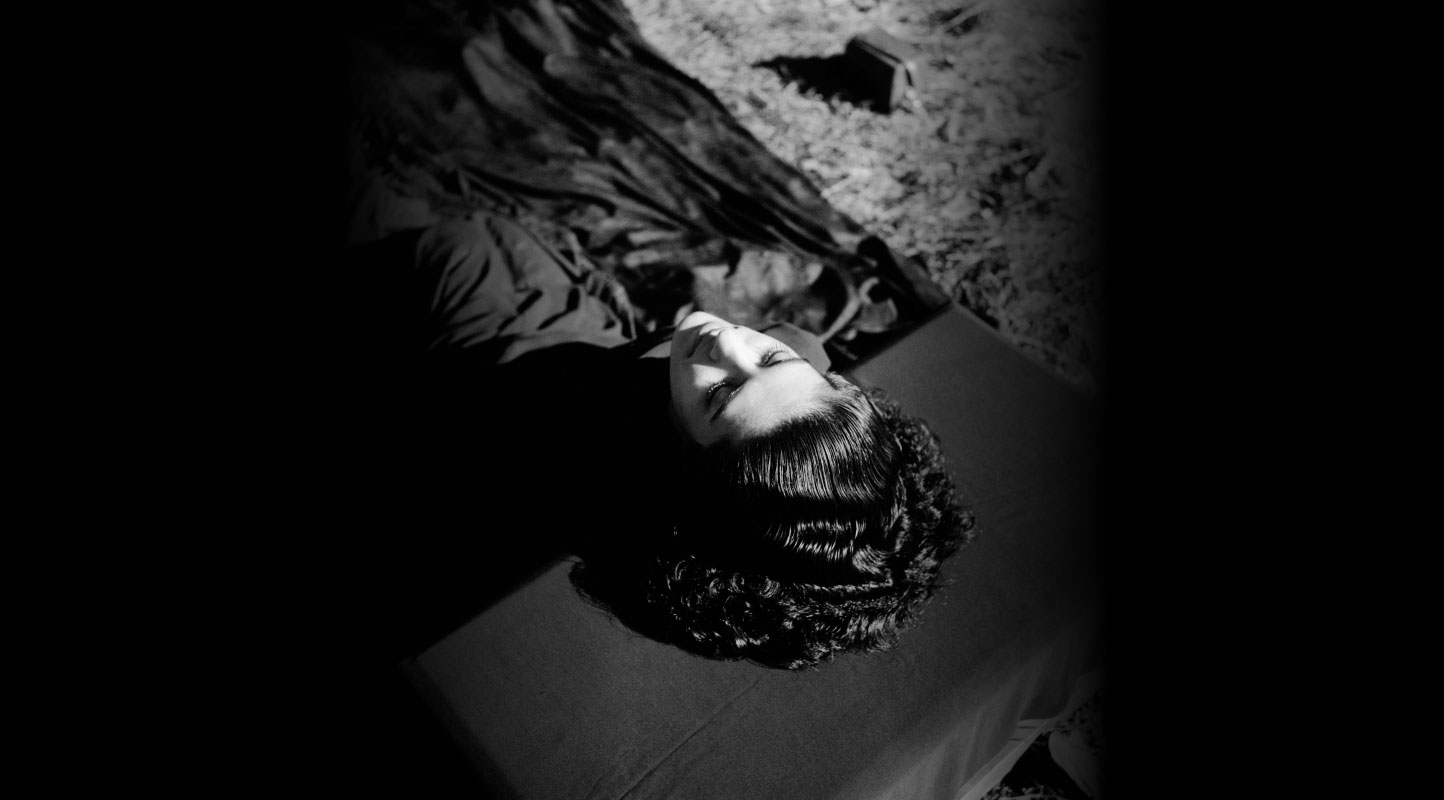Acts of Curation: On Artists for Artists
Experimenter’s 16th anniversary show Artists for Artists was curated by three of the gallery’s represented artists, namely Sohrab Hura, Rathin Barman and Bhasha Chakrabarti. Together, they brought in four other artists—Rai, Aishwarya Arumbakkam, Sathish Kumar and Rupali Patil, none of whom had previously exhibited at the gallery. This practice is a highlighting of artists as friends, coworkers and mentors, and what that does to each other’s practice, as Priyanka Raja, the co-founder of Experimenter, said at the opening.
"Crater – II" (Rai. 2025, Charcoal, fluorescent pigment and acid green dye on cloth, 61 1/4 x 183 in ,155.4 x 464.8 cm)
Goa-based artist Rai was invited by Chakrabarti–they have known each other since Chakrabarti was practicing as an artist in Delhi. Rai has been working with the ecology of tidal networks around the khazan regions of Goa—reclaimed wetlands once owned by the village in a rotating system of ownership, which inherently propelled a motivation to maintain them. This indigenous infrastructural practice shifted during the Portuguese occupation and post-independence. While talking to her grandmother about rivers in Goa, the latter recalled her village Tishori in Bangladesh, which was close to the ports in Chittagong. Tishori was bombed during a Japanese air raid during World War II due to it being a strategic target for disrupting supply chains for British troops. The bombing left craters across the fields, which filled up with water during monsoons and became village ponds. “This reminded me of the abandoned mining quarries in Goa with harmful remnants lurking in their depths,” Rai said later. “Yet during monsoon they fill with water and look stunning. But we do not really know what mixed into the water or what might surface from those depths.”
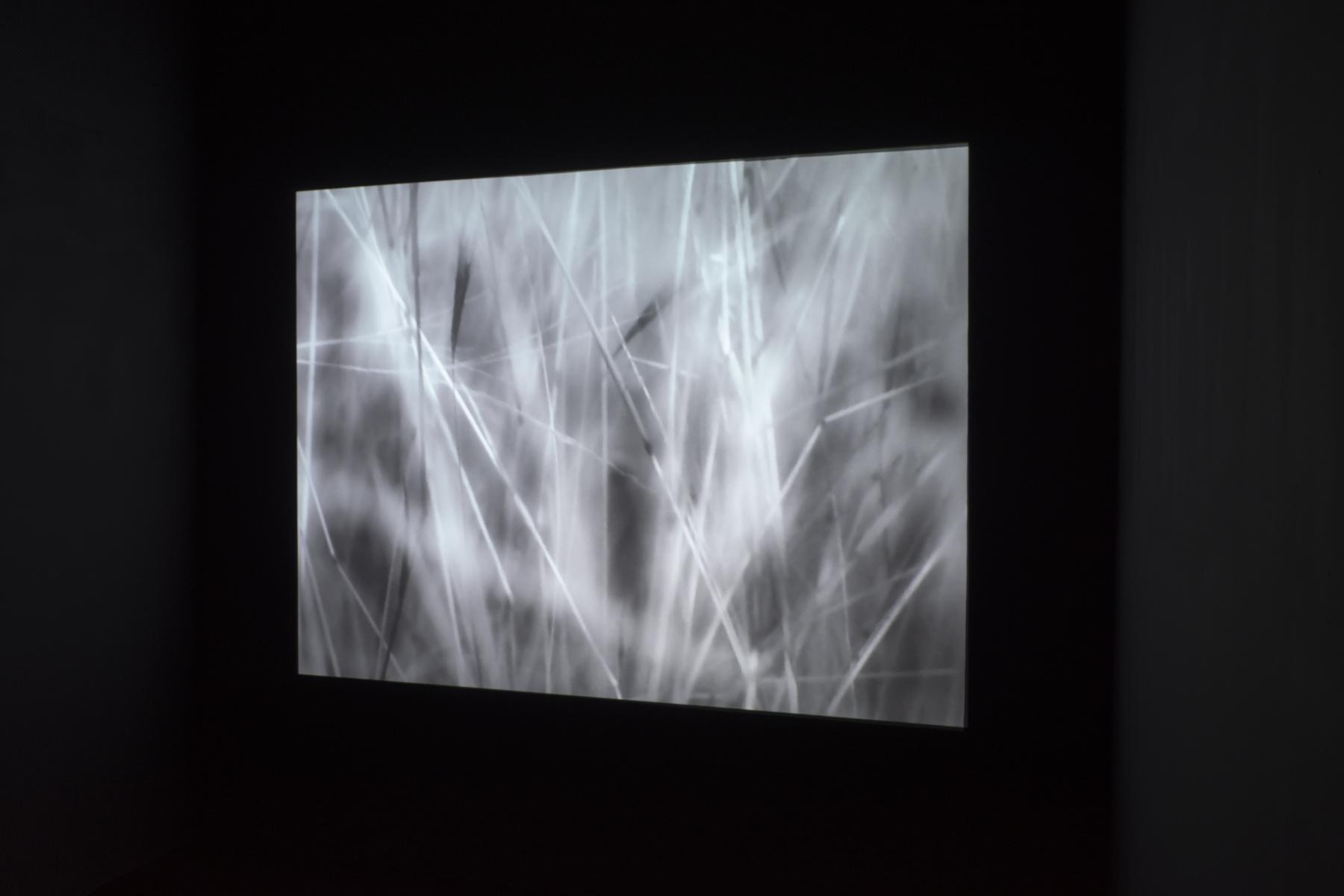
"Search Party" (Rai. 2024, Single channel video, Duration: 16:16 min)
Memory and spatiality thus become intertwined in Rai’s practice, in all three of her exhibiting works Search Party, Fever and Ngan & Nilnil which came about through a series of chance encounters she had while walking around Aldona in Goa. The gallery is filled with crickets chirping from a film from Search Party, and lights are dimmed, almost simulating Rai’s nocturnal walks. In the film, we follow a fisherman she met who doubles as a guard or paini, taking care of the sluice gate of the khazan, and keeping the area and fishing equipment clean alone. There is an element of sonic anxiety underneath the apparent calmness as the fisherman takes his boat out into the night, communicating through his light signals. However, shining his torch on submerged objects and unclear peripheries of the water, he searches for something inexplicable. It is almost like a fever dream, submerging into the unconscious to unearth memories that one cannot quite make sense of. The eye of the torch almost becomes the drunken conscious mind, drowned momentarily, searching and blinking playfully. A short story by Goan writer José Lourenço titled “The Fever”—about a delirious man whose shadow was sick—particularly influenced Rai. Watching family living with dementia has made the fragility of memory immediate, and the artist is drawn to what is lost, buried or fractured and how memory can emerge from those absences in unexpected ways. We see this reflected in the fragmented ostrich eggshells with deep pools painted within them, taking from the practice in Goan households of placing ostrich eggs beside ancestral memorabilia.
She questions how memory lives on when it slips away from the body—in material, place and gesture. The fisherman’s act of probing and revealing his subterranean watery realm with a torchlight is something that Rai makes us replicate around the gallery through the shining of ultraviolet torchlight on the pieces of acid green-dyed cloth. This industrial chemical dye is noxious, yet used by fisherfolk on their nets since the safer version of it which is made with tannin from mangroves is now disallowed. On the cloth is an intricately charcoal-sketched landscape with a crater, quite reminiscent of black ink Chinese paintings mounted on scrolls. Indeed she used ink as a medium quite frequently, she recalled. The torchlight reveals a second layer of the landscape come alive, painted with fluorescent acrylic pigment, almost like uncovering petroglyphs in Usgalimal in Goa. It's a certain uncovering of memory, of the craters her grandmother suddenly recalled, now alive before us, the fluorescence imitating the bioluminescence of water bodies and landscapes in Goa.
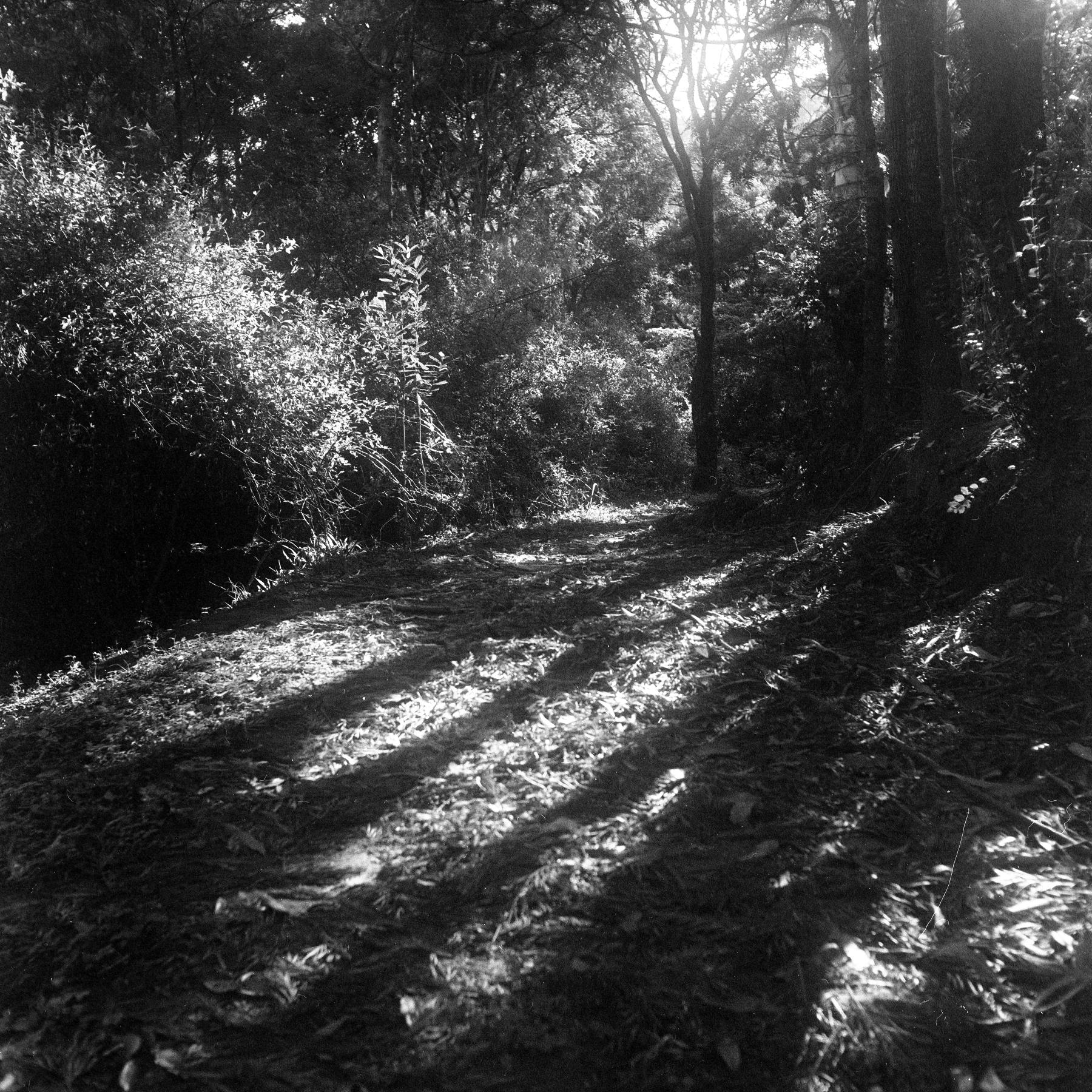
"Sunlight" (Sathish Kumar. 2020–Ongoing, Archival pigment print on paper, 12 x 12 in, 30.5 x 30.5 cm.)
Sathish Kumar was selected by Hura, whom the latter had programmed twice before at Ishara Art Foundation and at the Sunaparanta Centre for the Arts a few years ago. Kumar’s photographs contain an essence of the childlike wonder of working with a point-and-shoot camera, which he first acquired as a sixteen-year-old. With it, he captures subjects which to us might have become everyday over the years—like getting intrigued by a dead fish, or its fried iteration on a beach, sands dotted with bare footsteps, so reminiscent of one's first holiday. In Sunlight, he was allured by the hope afforded by the sun, which accrues interesting meanings in a photograph of a rocket shooting through lumps of clouds towards the sky—which was actually Chandrayan III. It is really his delight in seeing something for the first time, but now—amidst the escalating border violence between India and Pakistan, and even before, with the National Register of Citizens, which excludes more than 1.9 million people, resulting in Indians being arbitrarily put into detention camps and decades of violence against religious minorities—it becomes a charged image in retrospect of how the right-wing government assesses its priorities.
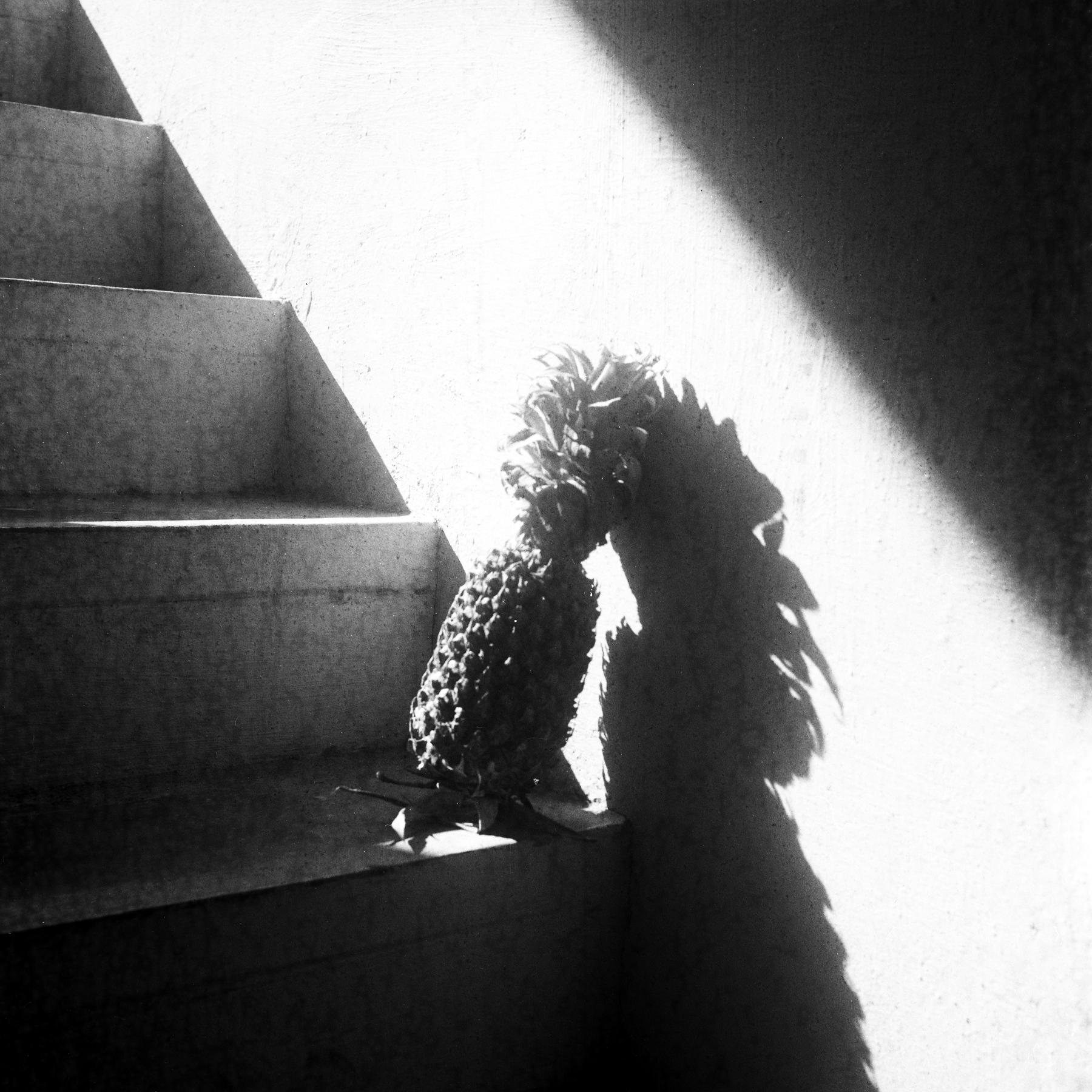
"Sunlight" (Sathish Kumar. 2020–Ongoing, Archival pigment print on paper, 12 x 12 in, 30.5 x 30.5 cm.)
It is this inherent curiosity towards the irregular, which takes form in photographs of a rat in a trap or a large rock partially balanced on tiny stones. It is almost like a practice of note-taking through images, be it through the serendipity of coming upon schoolgirls picking flowers from a tree or the silent trepidation of watching blood being transfused in the hospital in Town Boy. However, it suddenly moves to the realm of the uncanny and surrealistic in photographing a suddenly discovered eyeball in a bowl of cut meat, which stares back at you in its dismembered state, highlighting the visceral. In Sunlight, Kumar works with visual traditions like still life through a photographer's rendition in capturing sunlight on a pineapple that has been balanced precariously on the stairs. There is a certain emotional quality to his images that quietly affects us, as we are hit with the familiarity of probably having taken iterations of these on our first camera phones—which many would loosely categorise as “bad photography”—fascinated by trees submerged in the winter mist and refusing the sun, an out-of-focus pigeon or a rear view mirror bathed in droplets of rain.
Installation view of Sunlight by Sathish Kumar as part of Artists for Artists at Experimenter – Ballygunge Place, Kolkata, 2025.
Working between the starkness of every pixel and the grainy, Kumar returns to the distortions of light upon the human body under water, which takes lurid forms in refracting the body into shapelessness in a pool, or obliterates the body structure of young adults bathing delightedly in a public water system. This nonchalantly takes an erotic turn in two men bathing under a waterfall, the sun defining their muscular silhouettes, their publicness turned intimate. The vanishing body is a subject of play for him, particularly one photograph at the sea, with two shadowy figures caught in multiple exposure, one of their formlessness almost vapour-like, turning into something less corporal, like a memory.

"Amma Breathing" (Aishwarya Arumbakkam. 2020-2022, Single channel video, Duration: 2:11 min, Variable.)
Aishwarya Arumbakkam was invited by Hura—they both work with the performative in documentary photography and moving image. While Arumbakkam was trying to reimagine her series ka Diengiei (working title) beyond book form to a gallery installation for Ishara Art Foundation’s Growing like a Tree, Hura, who was curating the show, had instigated some of her thinking around storytelling outside the book. In this show, Arumbakkam projected a video of her mother sitting still, that glitched every few seconds to imply movement, on thin white cloth which rippled like malleable skin. Ten Sounds I Cannot Hear was a process of documenting her parents during the two years of the pandemic when she was away studying in the US. Arumbakkam has always moved beyond the boundaries of documentary for her storytelling to include staging, and here too, her digital interactions with her parents became her photographic obsession. Asking them to sit for her, she documented their stillness, their movements and the usual nothingness in-between moments of any relationship. The repetitiveness of these acts, like continuously monitoring her father’s Fitbit was visualised in animated form, in a continuous loop of him simply walking away from the screen. It is certainly her patience, and also what her parents seem to have had to go through this process, that humorously transferred onto the Gampi paper prints of her mother, which flew in the air having been pinned on the top corners, as we waited for the image to descend into the stillness of eye view. These prints are a series of triptychs that progressed like a film of her mother holding a chair, the wrinkled paper adding another layer of fragility and old skin, chosen for that very purpose. Arumbakkam has been inclined to transfer an emotive quality to her work, like her zine (Handbook), where the blemished print and paper intentionally replicated her original hastiness of creating the first copy with a subpar home printer, whereas the Gampi paper revealed a desire for tactility amidst distance.

"Fluid ground above and below-II" (Rupali Patil. 2023, Gouache and watercolor on paper, 39 3/4 x 26 in, 101 x 66 cm.)
Rupali Patil, was selected by Rathin Barman—they both had been following each other’s practice for years. Patil has been working around the politics surrounding land ever since shifting to Mumbai after completing her printmaking degree from MSU Baroda—one of her works plots water pipelines on a graph, broken into pieces to signify privatisation of the resource in Mumbai. That was also a time when she started to configure her own identity in a new city and the dynamics of her spilling her sweat and labour as she travelled to and from Colaba like hundreds of others. It was a certain relating of herself to the landscape around her, which she does in If We’d Open People Up, We’d Find Landscapes, a partial selection from a larger show—like most other shows in the exhibition—which was her first solo in Berlin. Like Arumbakkam, she started this work during the pandemic, when she came across an article in the WIRED about sugarcane factories producing harmful ethynyl and the general lack of hygiene causing female workers to opt for removing their uteruses. It was particularly jarring as she would roam around sugarcane factories as a child. Irked by capitalism’s long arm of domination, her work combines the physical and the infrastructural to delve into an ecofeminist criticism of the system which uses female bodies as labour. Red menstrual blood and disembodied breasts flow from industrial pipes, like discarded by-products. Returning to the tale of Nangeli, who paid the breast-covering tax in Travancore by cutting off her breasts altogether, she transforms two hills into these breasts. An insistent need to break out of the restrictive frames and boundaries of a square mounted canvas and framed work is related through frame-less works along with multiple canvases standing together in a sculptural manner. “It’s for freedom,” she laughed, also adding that the frames were limiting for what she was trying to convey. Always working with different mediums, she continued that practice by creating ceramic breast-shaped mycelium, equating their concealed role in plant growth to the invisibilisation of female labour in a work economy which measures their physicality in terms of efficiency, all the while ignoring the very body producing the said labour and its physical and capital needs.
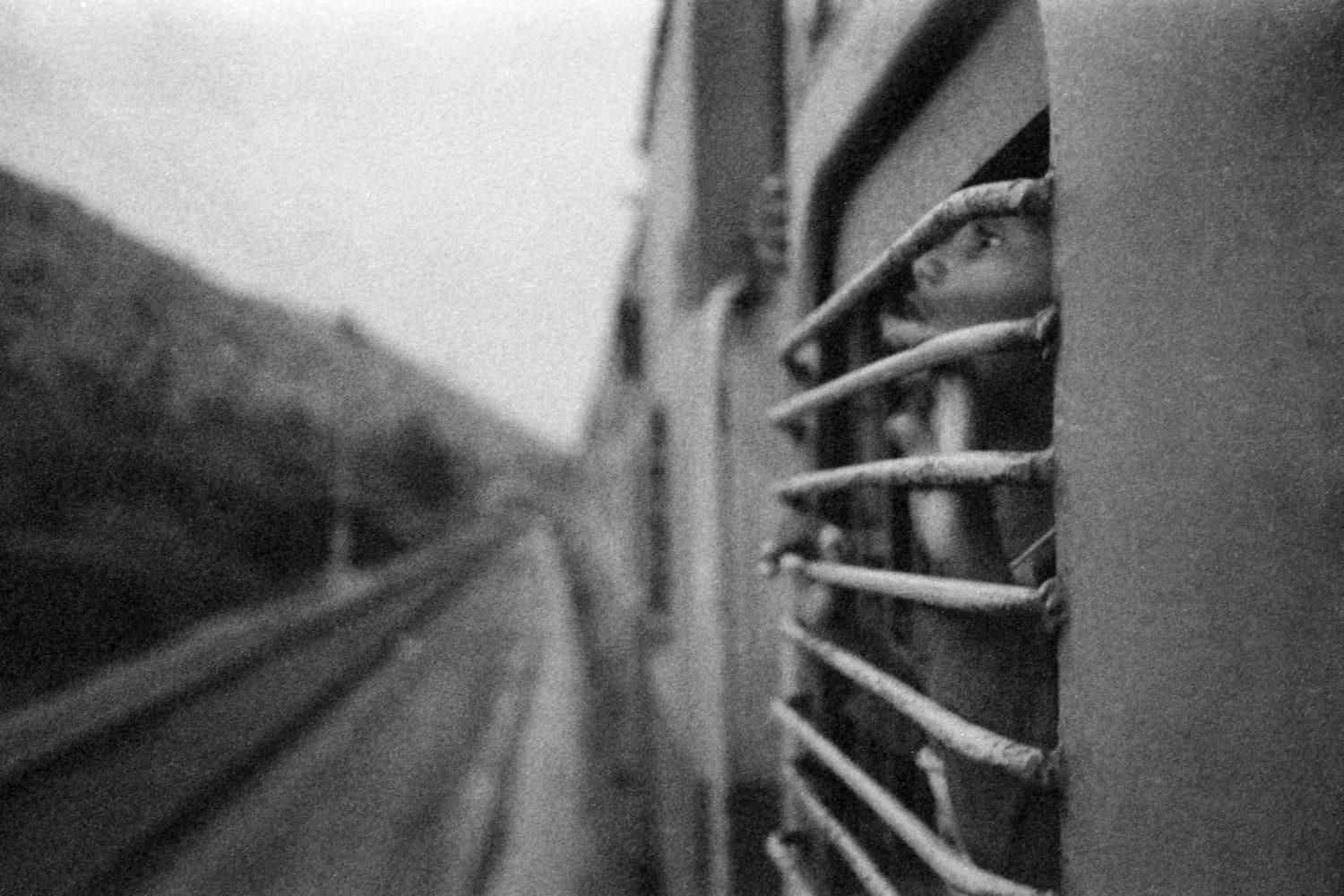
"Sunlight" (Sathish Kumar. 2020–Ongoing, Archival pigment print on paper, 12 x 12 in, 30.5 x 45.7 cm.)
To learn more about the work of some of the artists from the show, revisit Anisha Baid’s conversation with Aishwarya Arumbakkam about storytelling through photography, Sathish Kumar discussing Town Boy (2022), Ketaki Varma’s reflections on Sohrab Hura’s solo exhibition Spill (2020), Gulmehar Dhillon’s curated album from Hura’s series Pati (2005–20) and Jigisha Bhattacharya’s essay on Hura’s work Snow (2015–ongoing).
All images are courtesy of the respective artists and Experimenter Gallery, Kolkata.



